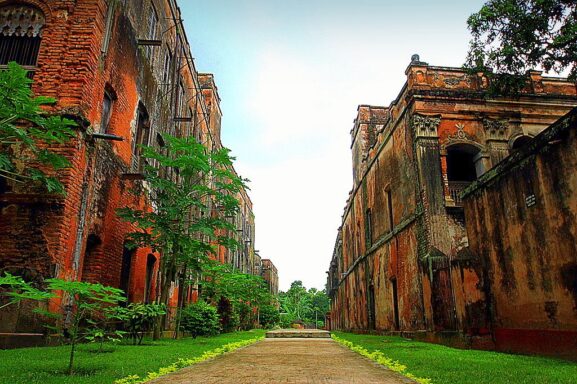Sompur Mahavihar
Sompur Mahavihar is an ancient Buddhist temple in ruins, located in the Paharpur area of Naogaon district, about 10 kilometers north of Badalgachhi Upazila Sadar, Bangladesh. Due to its location in the Paharpur area, many people know it as Paharpur Vihar. In the late eighth or early ninth century, Sri Dharmapala Deva, the second ruler of the Pala dynasty, constructed this monastery.
Until 300 years after the construction of this Buddhist monastery, Monks operated it as a teaching institution, where many Buddhists from different parts of the subcontinent came here. Also, countries such as China, Myanmar, Tibet, Malaysia, Indonesia, etc. came here to acquire knowledge.
In 1879, Sir Cunningham made this important discovery. In 1985, UNESCO listed Sompur Buddhist Mahavihara as a World Heritage Site. According to UNESCO, the Sompur Mahavihar is the second largest Mahavihar in the southern Himalayas, equal in size to Nalanda Mahavihar in India.
History and location of the Sompur Mahavihar
In ancient times, this Bengal region was a fragmented state. There were 16 townships, including Gaur, Pundra, Samatat, Harikela, and Varendra. Naogaon was then part of Pundravardhan township. Many kings from many clans came to control these 16 towns. One of them was Sri Dharmapala Deva, the second king of the Pala dynasty. He built this Buddhist monastery around the end of the 8th century and the beginning of the 9th century.
The Pala emperors were followers of the Mahayana and Tantric sects of Buddhism. They were great admirers of classical Indian philosophy, literature, painting, and sculpture. On that occasion, they built several temples. Sompur Mahavihar is one of them. Later in 1879, Sir Alexander Cunningham discovered this gigantic structure.

At present, the ruins of this Mahavihar can be seen in the Naogaon district under Greater Rajshahi. The whole area is quadrangular in shape, and the soil of this area is red due to the significant amount of iron content. This Vihar has assumed a hill-like form due to the low-lying area around the Vihar.
The infrastructure of Sompur Mahavihar
The Vihar is spread over an area of about 27 acres. It has 177 rooms. The colossal temple in the middle looks basically like a mountain from a distance. The length-width of each cross is 108.3m and 95.45m. In the intervening space are several additional walls connected at angles, and in the center is a hollow quadrangular chamber without doors and windows. This chamber extends from the bottom of the temple to the top. The structure of this vast temple is built around this empty chamber.
The present height of the temple is about 21 meters. But expert believes that the size of this temple was more than 30 meters. However, according to the locals of the Naogaon area, the main temple is sinking day by day, and the height when the excavation work started in the eighties was higher than it is now. People can see Terracotta works on the walls of the main temple. The terracotta is made in the pattern of different types of idols.

There were rooms around the temple. Experts believed that tantric saints and student monks from far away stayed in these houses. The rooms are approximately 4.26 meters in length and 4.11 meters in width. The rooms surround the main temple like a square. There are 45 in a row on the north side and 44 on the other three sides. Pala dynasty built Somnath Vihara and many Buddhist Viharas in Bengal and Bihar. According to the Tibetan narrative, there were five significant viharas of that period, of which Sompur was one, and the other four were Vikramshila, Nalanda, Odantaputra, and Jagaddalvihara in Rajshahi. These Viharas were in regular contact with each other and much like the inter-university co-elaboration of the present day.
The archeologist has not found a trace of the sudden destruction of the Vihar. However, experts believe that after the decaying Buddhist rule in Bengal, the rise of the Hindu-dominated Sen dynasty, and the Muslim victory in Bengal after losing them. As a result, the residents slowly abandoned Bihar. That was about eight hundred years ago.
How to go
Hanif, Shyamoli, SR, Deepjol, and many other bus services are running on this road. For those who love to travel by train, there are also good facilities to visit Naogaon. Shantahar Railway Junction, one of Bangladesh’s oldest and largest railway junctions, is located near Naogaon. You can take the Shantahar-bound train from almost any part of Bangladesh and come straight to Naogaon. It does not take more than half an hour to go to Naogaon from Shantahar. The distance from the city to Paharpur is approximately 32 km.
Google Maps location of Sompur Mahavihar, click here.
Also, you can read about another architectural wonder of Bangladesh, the Sixty-domed Mosque in Bagerhat District of Khulna Division, click here.



